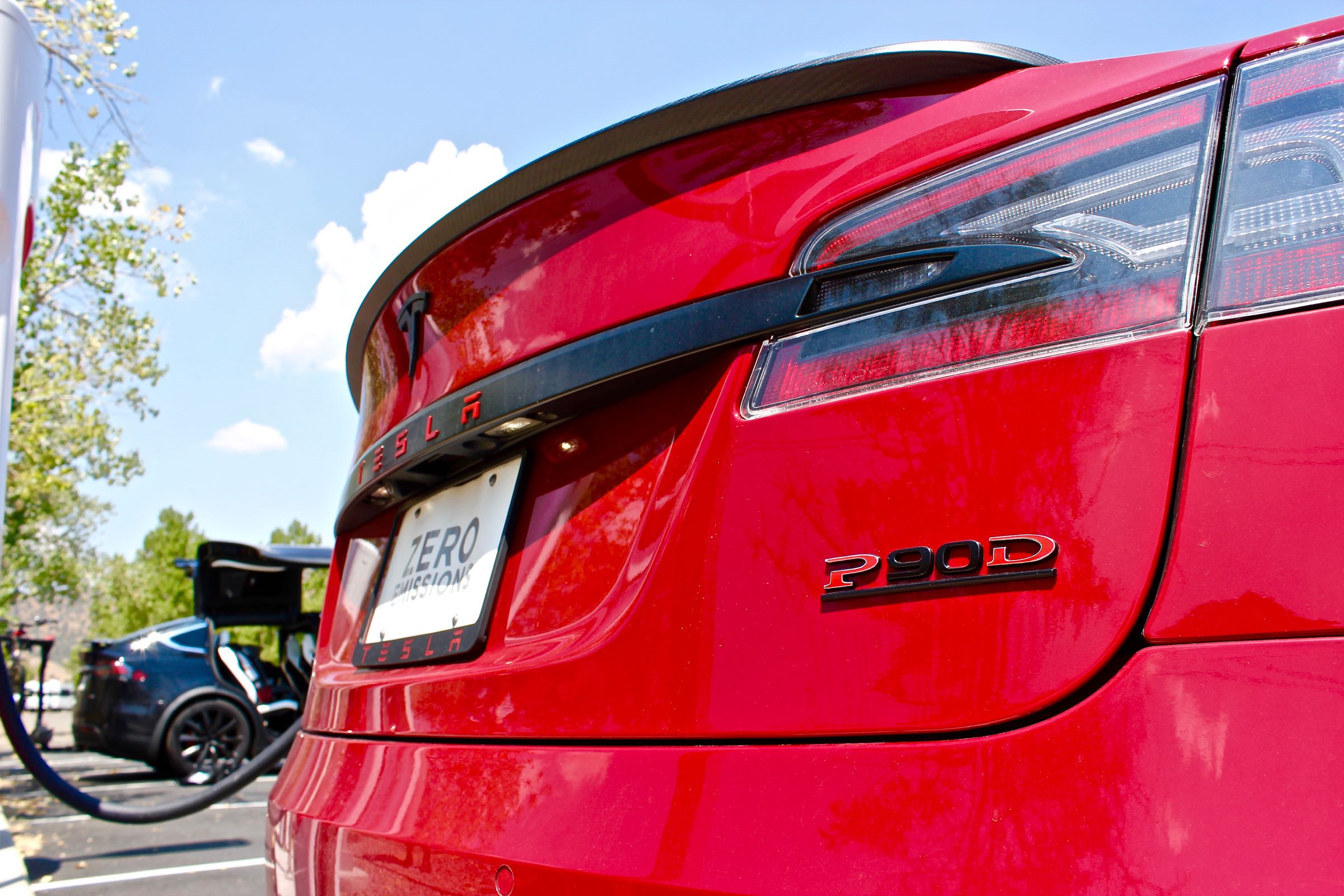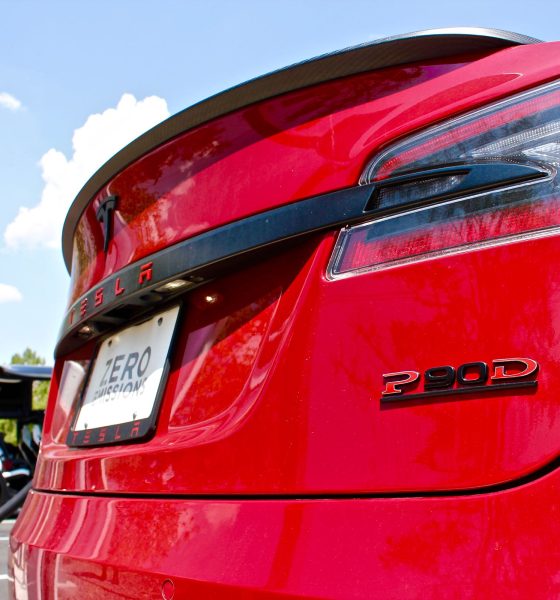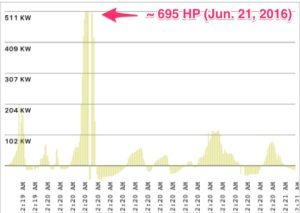

News
Tesla will remove performance limiting algorithm from cars in next software update
Tesla’s President of Global Sales and Service, Jon McNeill, has indicated that performance limiting software will be removed from Model S and Model X vehicles in the next over-the-air software update. McNeill’s announcement, made on the Tesla Motors Club (TMC) forum, follows reports that the company was limiting power on performance versions of its Model S and Model X vehicles through a software algorithm designed to protect the vehicle’s powertrain from excessive wear and tear. However, despite the intended safeguards, Tesla owners questioned whether it was right for the electric car maker to ‘downgrade’ performance on a vehicle that was intentionally purchased for its touted acceleration capabilities.
UPDATE: Tesla removes performance restrictions in new software update
Tesla Performance Limiting Discovered
Teslarati was first notified of the potential issue back in September of last year when local friend and Ludicrous Model S P90D owner, best known as Tech_Guy on TMC, sent us graphs showing the loss in power on his vehicle. At first, the issue was thought to be a result of the Firmware 8.0 update that introduced Tesla’s, then, latest Autopilot feature which put radar technology at the forefront.
Power graph provided via the PowerTools app
Not sure of the cause for the power loss, Tech_Guy solicited feedback from his local Tesla Service Center only to be told that software on his Ludicrous Model S has limited power output because of too many uses of Tesla’s Launch Mode feature. The issue would eventually be surfaced across TMC, with other owners reporting the same loss in power. More alarming is the discovery that Tesla’s power limiting safeguard was taking place on non-Ludicrous cars and affecting owners with Tesla’s P85D vehicle. Even early P85 cars that pre-dated the company’s dual motor configuration were reported to be affected.
Tesla would later add a disclaimer to its online Design Studio confirming that limiting controls may be placed to protect the performance and longevity of the powertrain.
It’s not just ‘Launch Mode’ and ‘Max Power’
Service descriptions coming from owners who were concerned that their newly purchased inventory car, or in some instances their certified pre-owned Performance variant, might have been affected by the power limiting software, revealed that Tesla did in fact use an algorithm to ‘count’ presumably the number of times a vehicle was driven under wide open throttle.
The discovery of a possible performance ‘counter’ raises a question of ethics. If an owner purchased a used P85D that was performance limited as a result of too many hard acceleration runs in the past, will the owner know and is it right for Tesla to downgrade the vehicle to essentially an 85D status though they paid for a P85D? The same goes for inventory vehicles which one can argue is more likely to be driven under wide open acceleration, for demonstration purposes, than a brand new vehicle belonging to an owner.
Show me the Power
Hailed as a hero among the Tesla owners community, Tech_Guy blew the whistle and surfaced an issue that quite possibly may have never been discovered.
On Tuesday, January 17, 2017 at 4:41 PM Pacific Time, Jon McNeill, Tesla’s President of Global Sales and Service responded to concerns surfaced on TMC with the following:
Based on your input, we have decided to remove all software performance reductions tied to frequent max power usage. These changes will roll out with our next software update (in about three weeks).
We had put these reductions in place to proactively protect the powertrain from wear and tear. Instead, we will monitor the condition of the powertrain and let our customers know if service is needed so that we can take proactive steps, such as by replacing parts if necessary, to maintain the vehicle’s performance.
Heavy-footed Tesla drivers rejoice. You’re getting your power back.

Elon Musk
Elon Musk and Tesla AI Director share insights after empty driver seat Robotaxi rides
The executives’ unoccupied tests hint at the rapid progress of Tesla’s unsupervised Robotaxi efforts.

Tesla CEO Elon Musk and AI Director Ashok Elluswamy celebrated Christmas Eve by sharing personal experiences with Robotaxi vehicles that had no safety monitor or occupant in the driver’s seat. Musk described the system’s “perfect driving” around Austin, while Elluswamy posted video from the back seat, calling it “an amazing experience.”
The executives’ unoccupied tests hint at the rapid progress of Tesla’s unsupervised Robotaxi efforts.
Elon and Ashok’s firsthand Robotaxi insights
Prior to Musk and the Tesla AI Director’s posts, sightings of unmanned Teslas navigating public roads were widely shared on social media. One such vehicle was spotted in Austin, Texas, which Elon Musk acknowleged by stating that “Testing is underway with no occupants in the car.”
Based on his Christmas Eve post, Musk seemed to have tested an unmanned Tesla himself. “A Tesla with no safety monitor in the car and me sitting in the passenger seat took me all around Austin on Sunday with perfect driving,” Musk wrote in his post.
Elluswamy responded with a 2-minute video showing himself in the rear of an unmanned Tesla. The video featured the vehicle’s empty front seats, as well as its smooth handling through real-world traffic. He captioned his video with the words, “It’s an amazing experience!”
Towards Unsupervised operations
During an xAI Hackathon earlier this month, Elon Musk mentioned that Tesla owed be removing Safety Monitors from its Robotaxis in Austin in just three weeks. “Unsupervised is pretty much solved at this point. So there will be Tesla Robotaxis operating in Austin with no one in them. Not even anyone in the passenger seat in about three weeks,” he said. Musk echoed similar estimates at the 2025 Annual Shareholder Meeting and the Q3 2025 earnings call.
Considering the insights that were posted Musk and Elluswamy, it does appear that Tesla is working hard towards operating its Robotaxis with no safety monitors. This is quite impressive considering that the service was launched just earlier this year.
Elon Musk
Starlink passes 9 million active customers just weeks after hitting 8 million
The milestone highlights the accelerating growth of Starlink, which has now been adding over 20,000 new users per day.

SpaceX’s Starlink satellite internet service has continued its rapid global expansion, surpassing 9 million active customers just weeks after crossing the 8 million mark.
The milestone highlights the accelerating growth of Starlink, which has now been adding over 20,000 new users per day.
9 million customers
In a post on X, SpaceX stated that Starlink now serves over 9 million active users across 155 countries, territories, and markets. The company reached 8 million customers in early November, meaning it added roughly 1 million subscribers in under seven weeks, or about 21,275 new users on average per day.
“Starlink is connecting more than 9M active customers with high-speed internet across 155 countries, territories, and many other markets,” Starlink wrote in a post on its official X account. SpaceX President Gwynne Shotwell also celebrated the milestone on X. “A huge thank you to all of our customers and congrats to the Starlink team for such an incredible product,” she wrote.
That growth rate reflects both rising demand for broadband in underserved regions and Starlink’s expanding satellite constellation, which now includes more than 9,000 low-Earth-orbit satellites designed to deliver high-speed, low-latency internet worldwide.
Starlink’s momentum
Starlink’s momentum has been building up. SpaceX reported 4.6 million Starlink customers in December 2024, followed by 7 million by August 2025, and 8 million customers in November. Independent data also suggests Starlink usage is rising sharply, with Cloudflare reporting that global web traffic from Starlink users more than doubled in 2025, as noted in an Insider report.
Starlink’s momentum is increasingly tied to SpaceX’s broader financial outlook. Elon Musk has said the satellite network is “by far” the company’s largest revenue driver, and reports suggest SpaceX may be positioning itself for an initial public offering as soon as next year, with valuations estimated as high as $1.5 trillion. Musk has also suggested in the past that Starlink could have its own IPO in the future.
News
NVIDIA Director of Robotics: Tesla FSD v14 is the first AI to pass the “Physical Turing Test”
After testing FSD v14, Fan stated that his experience with FSD felt magical at first, but it soon started to feel like a routine.

NVIDIA Director of Robotics Jim Fan has praised Tesla’s Full Self-Driving (Supervised) v14 as the first AI to pass what he described as a “Physical Turing Test.”
After testing FSD v14, Fan stated that his experience with FSD felt magical at first, but it soon started to feel like a routine. And just like smartphones today, removing it now would “actively hurt.”
Jim Fan’s hands-on FSD v14 impressions
Fan, a leading researcher in embodied AI who is currently solving Physical AI at NVIDIA and spearheading the company’s Project GR00T initiative, noted that he actually was late to the Tesla game. He was, however, one of the first to try out FSD v14.
“I was very late to own a Tesla but among the earliest to try out FSD v14. It’s perhaps the first time I experience an AI that passes the Physical Turing Test: after a long day at work, you press a button, lay back, and couldn’t tell if a neural net or a human drove you home,” Fan wrote in a post on X.
Fan added: “Despite knowing exactly how robot learning works, I still find it magical watching the steering wheel turn by itself. First it feels surreal, next it becomes routine. Then, like the smartphone, taking it away actively hurts. This is how humanity gets rewired and glued to god-like technologies.”
The Physical Turing Test
The original Turing Test was conceived by Alan Turing in 1950, and it was aimed at determining if a machine could exhibit behavior that is equivalent to or indistinguishable from a human. By focusing on text-based conversations, the original Turing Test set a high bar for natural language processing and machine learning.
This test has been passed by today’s large language models. However, the capability to converse in a humanlike manner is a completely different challenge from performing real-world problem-solving or physical interactions. Thus, Fan introduced the Physical Turing Test, which challenges AI systems to demonstrate intelligence through physical actions.
Based on Fan’s comments, Tesla has demonstrated these intelligent physical actions with FSD v14. Elon Musk agreed with the NVIDIA executive, stating in a post on X that with FSD v14, “you can sense the sentience maturing.” Musk also praised Tesla AI, calling it the best “real-world AI” today.











